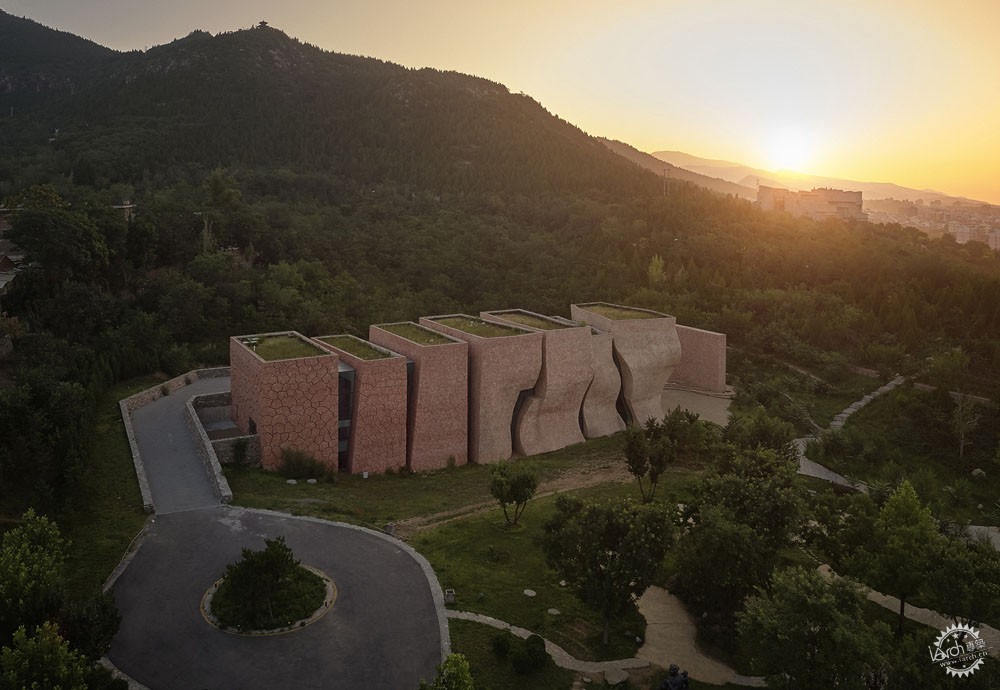
天津于庆成美术馆|Yu Qingcheng Gallery, Tianjin, China. Image Courtesy of Architectural Design and Research Institute of Tianjin University
“I Don’t Have Any Competitors Because My Projects Are Unique”: In Conversation with Hua Zhang
由专筑网李韧,王雪纯编译
以下是我对天津建筑师张华的采访记录。张华是天津大学建筑规划设计研究院张华工作室的创始人。张华教授的作品遵循了不妥协的形式生成理论,这表达了转化过程。在其许多项目中,这位建筑师明确地表达了这样的转化方法,例如从基本到复杂,从整体到分散,转化过程是项目的重点。我们与张华进行了沟通,在他的工作室里有几位青年建筑师和研究者,他们都在认真地倾听采访。
The following excerpt from my recent interview with Tianjin-based architect Zhang Hua continues an ongoing series of interviews that I’ve been conducting during my frequent trips to China. Zhang Hua is leading his design studio, Zhanghua Architects, which is a part of Tianjin University Research Institute. Professor Zhang Hua’s work follows his uncompromising form-generating theory, which is based on the desire to capture the progression of transformational processes. In his many built projects, the architect examines and expresses such formal transformations as turning from something basic to complex or from monolith to disperse. The focus is on the state of transformation itself, how a form is changing and morphing from one state to another. We spoke with Zhang Hua through an interpreter at the institute, with half a dozen young architects and researchers from his studio, seated all around and taking notes.

山东淄博王村小米醋博物馆|Millet Vinegar Museum / Zhang Hua. Image Courtesy of Zhang Hua
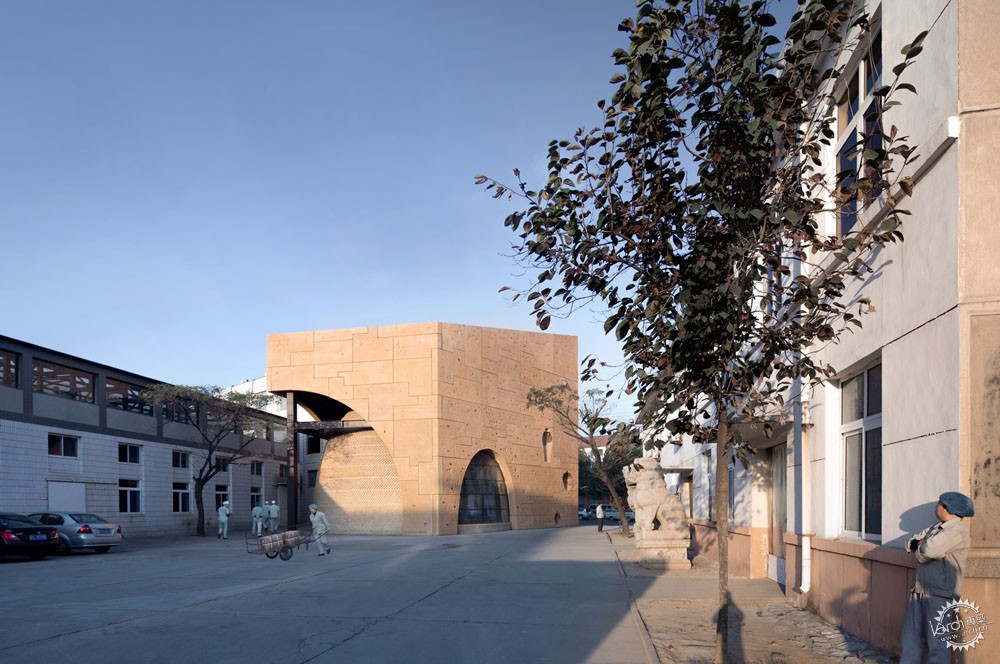
山东淄博王村小米醋博物馆|Millet Vinegar Museum / Zhang Hua. Image Courtesy of Zhang Hua

山东淄博王村小米醋博物馆|Millet Vinegar Museum / Zhang Hua. Image Courtesy of Zhang Hua
Vladimir Belogolovsky(下文称为VB):几天前,我们在天津大学见过面。我对你的作品立刻产生了兴趣,它们让我感觉很有力量。你说你的作品不同于别人,它们是独一无二的,你可以说说看吗?
Zhang Hua(下文称为ZH):这不是个结果,而是过程,我注重过程。
VB:对你而言,独一无二有多重要?
ZH:我有自己的理论框架,但是我不在意特定的外观形态。我对设计结果呈开放态度,我也不想改变自己的风格。我关注的是转变过程,即一件事如何变成另一件事。我比较感兴趣的是两种状态之间的切换,比如从实到虚,从封闭到透明,从平面到空间,从静态到动态等等。我对这种过程很感兴趣,因为这能反映物理变化、几何变化、概念变化。
VB:你曾经说,“建筑需要理论。”你可以谈一谈吗?
ZH:我的理论基础是拓扑学,它来源于数学和几何。我对自然生长、自相似、更新迭代、数学结构细部与算法很感兴趣。同时我也常常从中国景观、山脉、地理、石头的形成、树木的生长、非欧几何、水文等等找寻灵感。
Vladimir Belogolovsky: We met the other day here at Tianjin University. I was immediately intrigued by some images of your work, which I find quite powerful. You said your work is different from everyone else’s. You said it is unique. Could you tell me how so?
Zhang Hua: It is not the outcome that’s original, but the process. I concentrate on the process.
VB: How important is it for you to be original?
ZH: I have a theoretical frame, but I am not concerned with achieving any particular look. I am open to many outcomes. I don’t want my style to be fixed. My focus is on transformative processes, on how one thing transforms into another. I am interested in the transition from one state to another – from solid to void, from opaque to transparent, from flat to volumetric, or from static to dynamic. I am interested in the transformation itself to reflect physical changes, geometric changes, conceptual changes, and so on.
VB: You made a powerful statement, “Architecture needs theory.” Tell me more.
ZH: The foundation of my theory is topology. My theory is based on mathematics and fractal geometry. I am interested in natural growth and self-similar, iterated, and detailed mathematical constructs and algorithms. I also find inspiration in Chinese landscapes, mountains, geology, stone formations, tree growth, non-Euclidian geometry, water patterns, and so on.
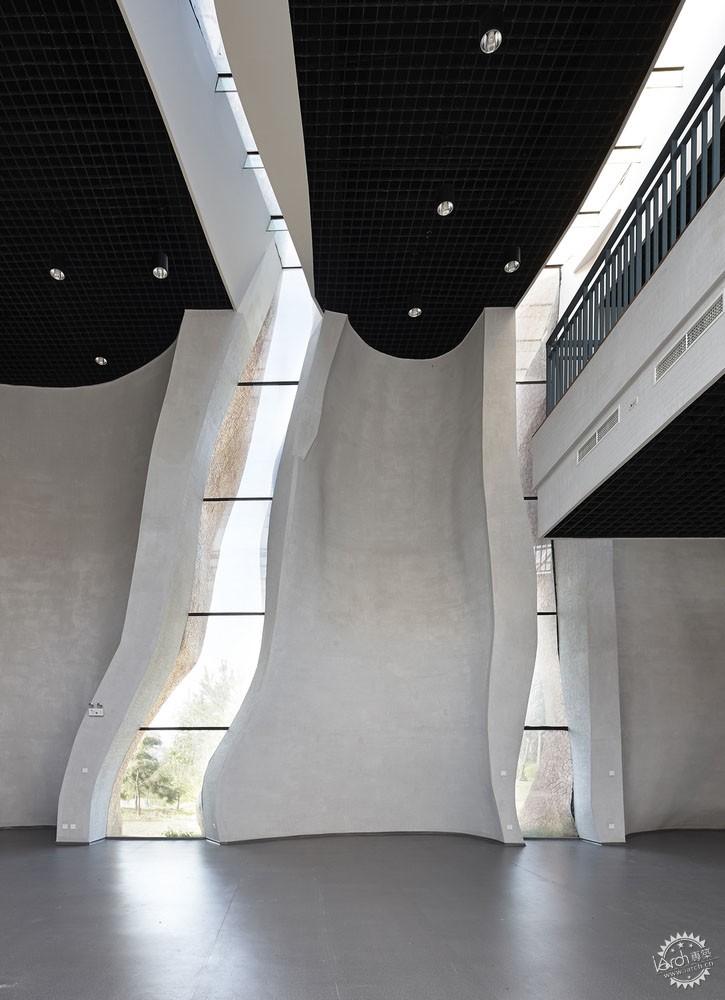
天津于庆成美术馆|Yu Qingcheng Gallery, Tianjin, China. Image Courtesy of Architectural Design and Research Institute of Tianjin University
VB:你怎么看王澍的作品?你曾经说,他代表了过去,而你代表了未来。
ZH:我的作品以现代科学、量子物理、复杂理论、复合几何为基础。而王澍的作品以传统建筑和几何为基础。
VB: What do you think about the work of Wang Shu? You told me that he represents the past, while you represent the future.
ZH: My work is based on modern science, quantum physics, chaos theory, complex geometry, and so on. Wang Shu’s ideas are based on traditional architecture and geometry.

战争纪念馆|War Memorial Hall / Zhang Hua. Image Courtesy of Architectural Design and Research Institute of Tianjin University
VB:你能说说你的事务所吗?它是如何适应天津大学建筑设计院这样大规模的设计机构的呢?在这里你是否有竞争者?还是说你只和外面的设计师竞争?
ZH:我们院有800多位员工,其中600多位是设计师、建筑师、工程师。我在这里工作非常自由,团队大概有十几位建筑师。我已经说过,我没有对手,因为我的项目独一无二。(笑)
VB:你同时也是大学老师,你如何教授建筑学呢?
ZH:他们做的是我工作室里的项目。我的学生以我的建筑理论为基础进行研究,我们的方向是相同的。
VB:你已经完成了几个重要文化中心项目,哪个你最满意呢?
ZH:天津于庆成展览馆,这是著名雕塑家于庆成的雕塑作品展。这是我的几何项目中妥协度最低的一个项目。它说明了静止到活跃的转变过程,其形式为从基本到复杂的表现。这就如同一次旅程,但是最终的目的地是开放的。一般来说,我会绘制草图,然后团队成员用计算机来表达。因此,计算机起到了引导作用。
VB: Could you talk about your studio and how it fits into the larger structure of the Tianjin University Research Institute? Do you have any competitors here or do you only compete with outside designers?
ZH: Our Institute has about 800 people, of which about 600 are designers – architects and engineers. I work with total freedom here, with a small staff of about a dozen young architects. And, as I already told you, I don’t have any competitors because my projects are unique. [Laughs.]
VB: You teach at the university. How do you teach architecture?
ZH: We work on the same or similar projects that I have in my studio. My students base their theses and research on my theory of architecture. We work in one direction.
VB: You have realized several major cultural centers. Which one are you most proud of?
ZH: That would be the Yu Qingcheng Gallery in Tianjin, a museum of terracotta sculptures by the famous sculptor Yu Qingcheng. It is the most uncompromising of my projects based on fractal geometry. This project illustrates the process of transformation from stationary to super active, as far as a form – from the most basic to very complex. It is like a journey; the destination is open-ended. Typically, I start with a sketch and then my team interprets it with the help of computers. And, at some point, the computer takes the lead.

天津于庆成美术馆|Yu Qingcheng Gallery, Tianjin, China. Image Courtesy of Architectural Design and Research Institute of Tianjin University
VB:这么说来,你放弃了控制整个项目,是吗?
ZH:这是合作项目。我只是给它一个方向而已。
VB:那么博物馆外部形式的转变对内部功能有什么影响呢?
ZH:可以有也可以没有。形式与功能之间存在着文化关系,这是一座雕塑博物馆,其形式只是内部展品的表现。形式相较于功能是独立的,但是这里不只是文化功能,这是设计的重点。一开始,我对内部空间有着不同的想法,但是团队没有意识到我想表达的方式。
VB:有没有哪个项目让你完全满意?
ZH:从来没有!(笑)
VB: In a way, you are giving up control or your authorship, right?
ZH: It is a collaborative process and I give it a particular direction.
VB: How does the transformation you describe that takes place in your museum’s exterior form affect the function within?
ZH: It does or does not, to some extent. There is a cultural relationship between the form and function. It is a sculpture museum; the form is simply an embodiment of the exhibits within. The form is independent of the actual function, but not its cultural function. That’s the whole point. Originally, I envisioned my interiors differently. But they were not realized the way I wanted.
VB: Have you ever realized a project that you were completely satisfied with?
ZH: Never! [Laughs.]

天津于庆成美术馆|Yu Qingcheng Gallery, Tianjin, China. Image Courtesy of Architectural Design and Research Institute of Tianjin University
VB:能说说你的设计灵感吗?你提到过几何、自然、地理,还有其他吗?
ZH:我给你看一张很久以前的草图(打开作品集)。你可以看到,这只是个草图,我就是画画而已。
VB: Could you talk more about your inspirations? You mentioned fractal geometry, nature, geology. What else?
ZH: Let me show you one of my sketches from a long time ago [opens one of several large portfolios of sketches]. As you can see, this is just a sketch. I was just drawing.
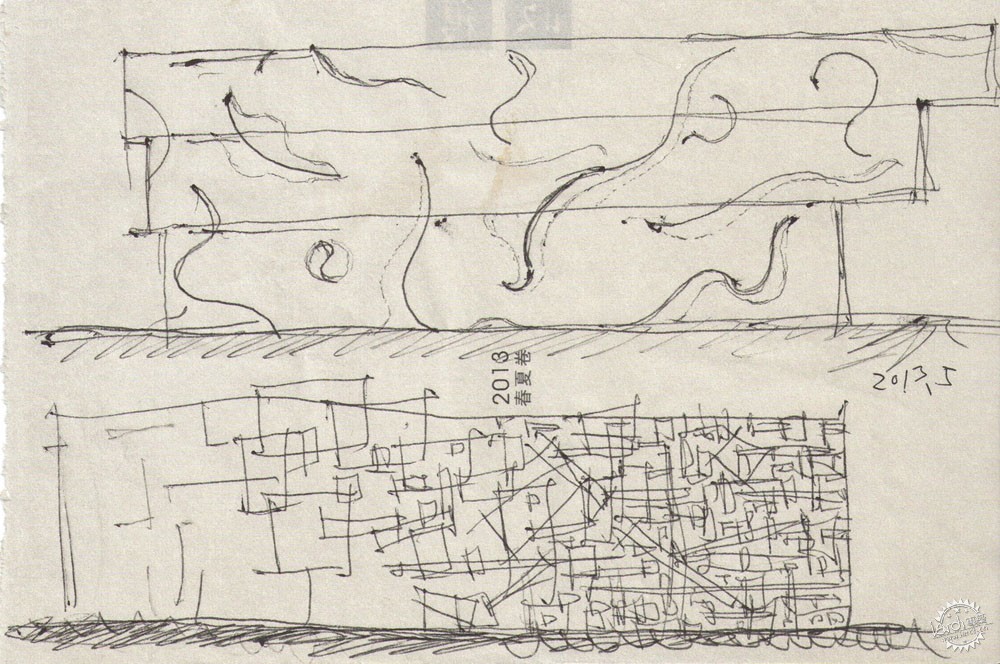
VB:与特定的项目无关?
ZH:完全无关。
VB:那后来是怎么变成一个具体项目的呢?
ZH:什么都没有发生。(笑)我只是画画而已,也许某一天就成真了。
VB:这是你潜意识的作品?
ZH:是的。
VB:早些时候,我们说到影响你作品的不同因素,例如数学、碎片、莫比乌斯环等等。那么还有哪些影响呢?你是否能从其他建筑师的作品中获取灵感?
ZH:高迪。
VB:当你第一次看到它的作品时,你是什么感受?
ZH:我哭了。(笑)我研究了很多年他的作品,但是去年是第一次亲眼所见。
VB:它为什么会让你流泪?
ZH:我不知道。我有涅槃般的感受。
VB: Unrelated to any particular project.
ZH: Completely unrelated.
VB: And then what happened? Did this lead to a project?
ZH: Nothing happened. [Laughs.] It was just a drawing, an idea. Maybe one day it will be realized.
VB: This drawing was something you did subconsciously.
ZH: Totally.
VB: Earlier we talked about many different influences on your work – mathematics, fractals, Mobius Strip, and so on. What other influences could you mention? Do you get any inspiration from other architects’ work?
ZH: Gaudí.
VB: What was your reaction when you first saw his work?
ZH: I cried. [Laughs.] I have been studying his work for many years, but I only had a chance to see it in person last year for the first time.
VB: What made you cry?
ZH: I have no idea. I had Nirvana-like feelings...
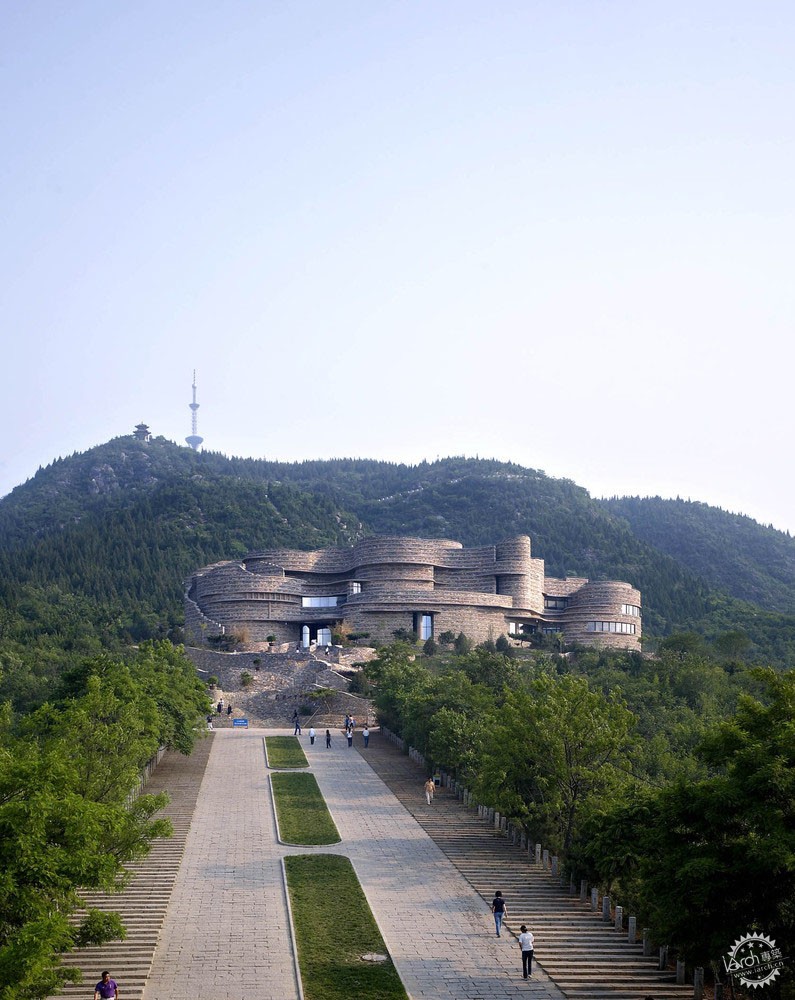
天津地质博物馆|Geological Museum Tianjin, China / Zhang Hua. Image Courtesy of Architectural Design and Research Institute of Tianjin University
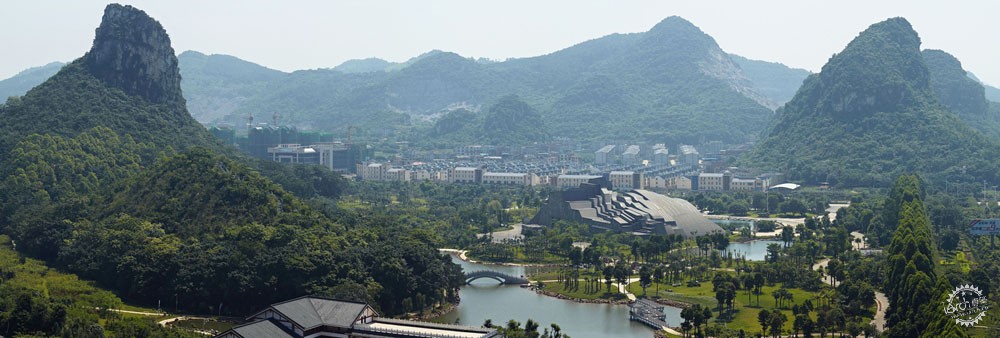
天津地质博物馆|Geological Museum Tianjin, China / Zhang Hua. Image Courtesy of Architectural Design and Research Institute of Tianjin University
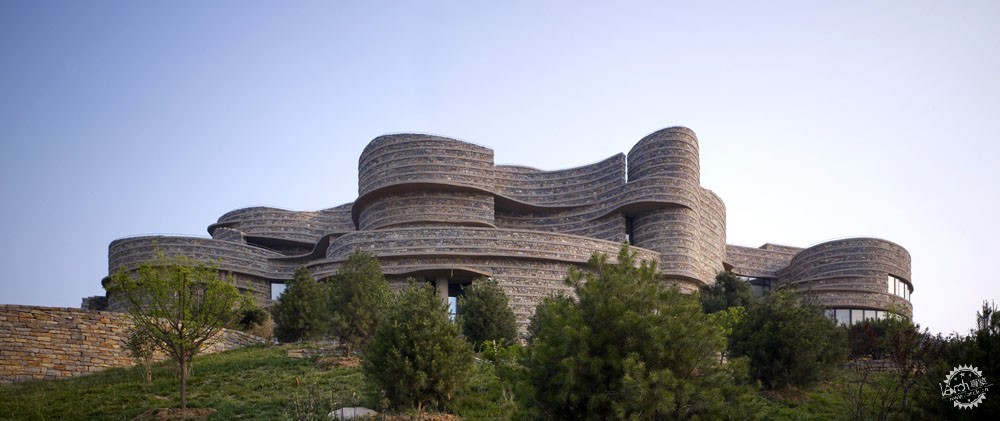
天津地质博物馆|Geological Museum Tianjin, China / Zhang Hua. Image Courtesy of Zhang Hua
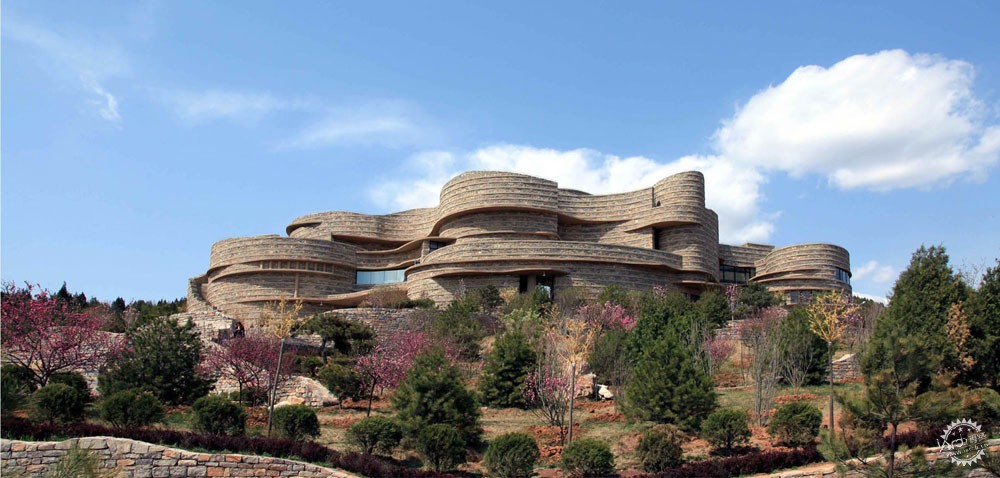
天津地质博物馆|Geological Museum Tianjin, China / Zhang Hua. Image Courtesy of Architectural Design and Research Institute of Tianjin University
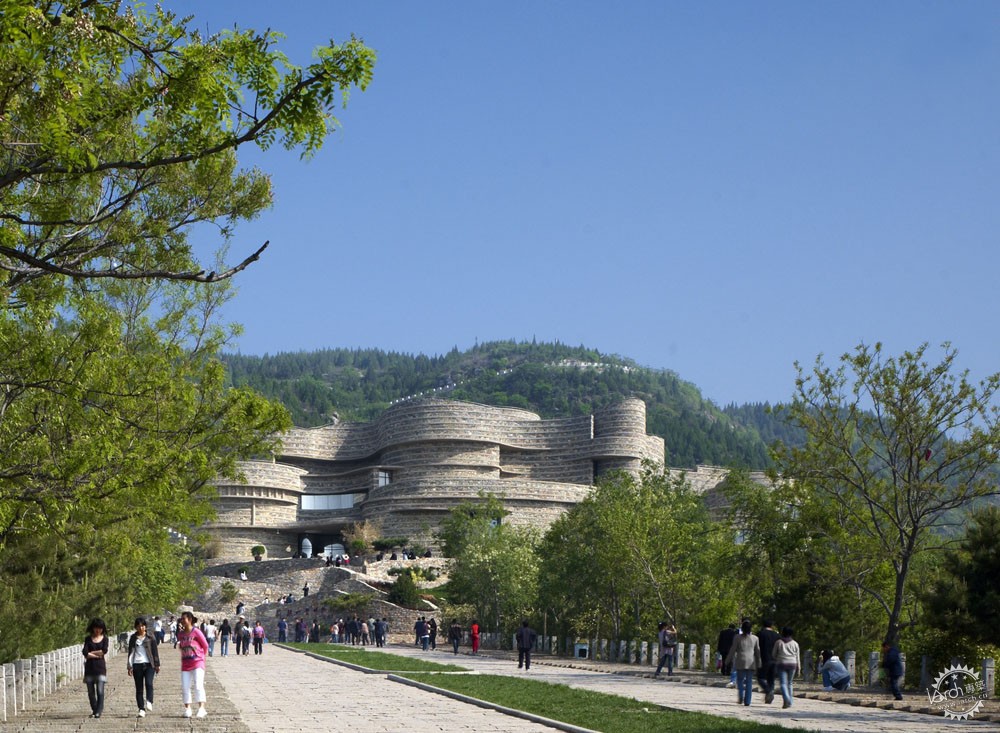
天津地质博物馆|Geological Museum Tianjin, China / Zhang Hua. Image Courtesy of Zhang Hua
VB:你另一项作品,天津附近的地质博物馆就与周围的山脉融合在一起,你能说说其主要概念吗?
ZH:这座建筑由石头建造而成,看起来就像地质层。这些石头来源于周围乡村的废弃建筑。因此,这个项目满足可持续需求。我对石头和矿物很感兴趣,也有着许多收藏品,这些都是我的工作灵感来源,将建筑与周围环境融合在一起,是我的设计的主题。
VB:你是否关注中国建筑是什么?你是否尝试过在项目中以任何形式表达它?
ZH:并没有。我有自己的表达方式,我并不觉得拘束。甚至在思考时我会感到孤独。
VB: Another one of your projects, Geological Museum near Tianjin appears to be merging with the surrounding mountains. Could you talk about its main concept?
ZH: The building is built out of stone, in layers like geological stratum. The stones were reclaimed from the abandoned houses in nearby villages in the mountains. So, it is a very sustainable project. I have a particular interest in stone and minerals, and I have an extensive collection, which is one of the references and inspirations for my work. Merging architecture with its surrounding is one of my primary themes.
VB: Are you concerned with what Chinese architecture is, and do you try to express it in any way in your work?
ZH: Not at all. I have my own ways of expressing my ideas. I don’t feel restrained in any way. I would even say that I feel lonely in my thinking.

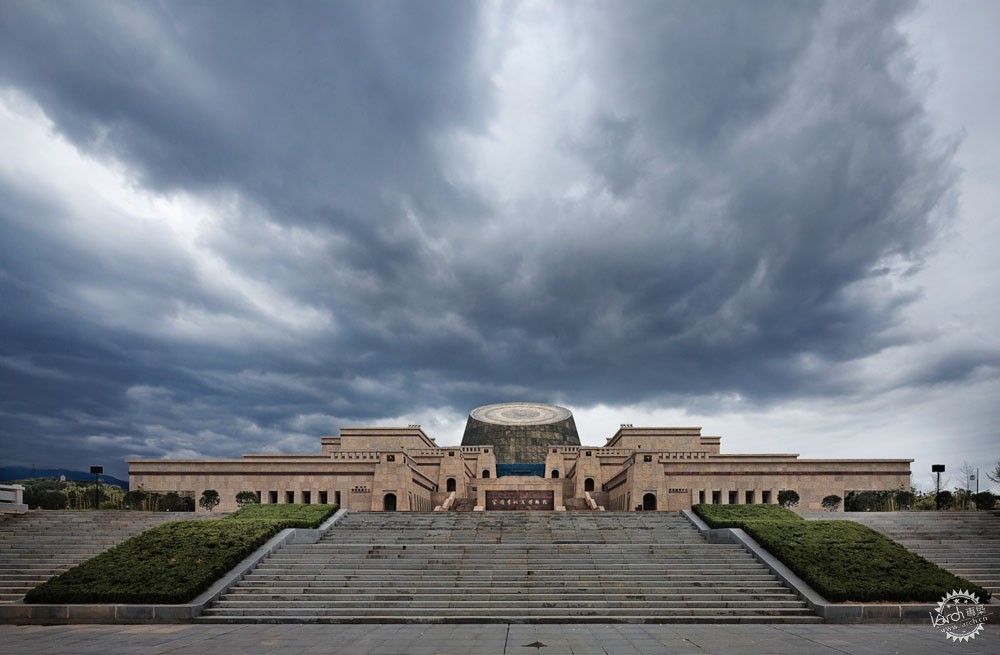
VB:这是很有趣的想法,因为当我和国际建筑师进行沟通时,我常常听到这样的话,事实上,你们建筑师都很孤独,因为你们会努力地寻找自己的方向,最终成功的时候,就是你们孤独感的顶峰。因为选择太多会导致孤立。这也是“Common Ground”主题变得如此重要的原因,现在的青年建筑师们放弃了自己的想法,更趋向于团队合作。
ZH:那不是我。(笑)
VB:你是否有梦想项目呢?
ZH:只是个想法,我希望能够拿下普利兹克奖!(笑)
VB: This is a very interesting thought because when I talk to leading international architects I hear this quite often – you architects are, in fact, very lonely because you try so hard to find your own way, and when you succeed, you become isolated. Too many choices lead to isolation. That’s why the theme Common Ground became so central in the profession a few years ago, and now younger architects are giving up their claims to authorship, preferring to focus on teamwork and problem-solving.
ZH: Not me. [Laughs.]
VB: Do you have a dream project?
ZH: Just a dream. I wish I would get the Pritzker Prize! [Laughs.]
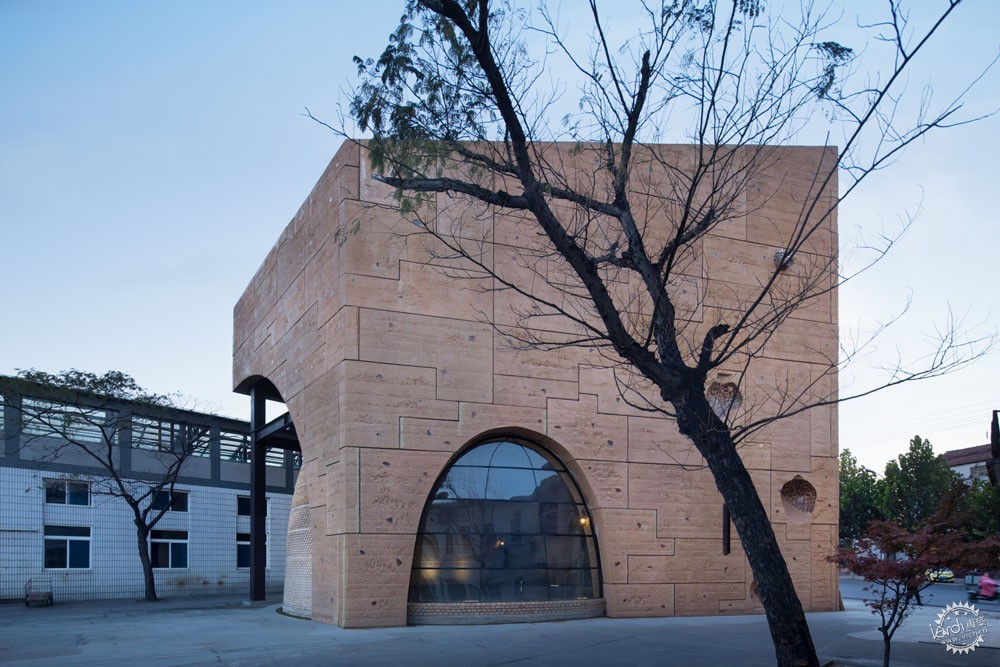
山东淄博王村小米醋博物馆|Millet Vinegar Museum / Zhang Hua. Image Courtesy of Zhang Hua

山东淄博王村小米醋博物馆|Millet Vinegar Museum / Zhang Hua. Image Courtesy of Zhang Hua
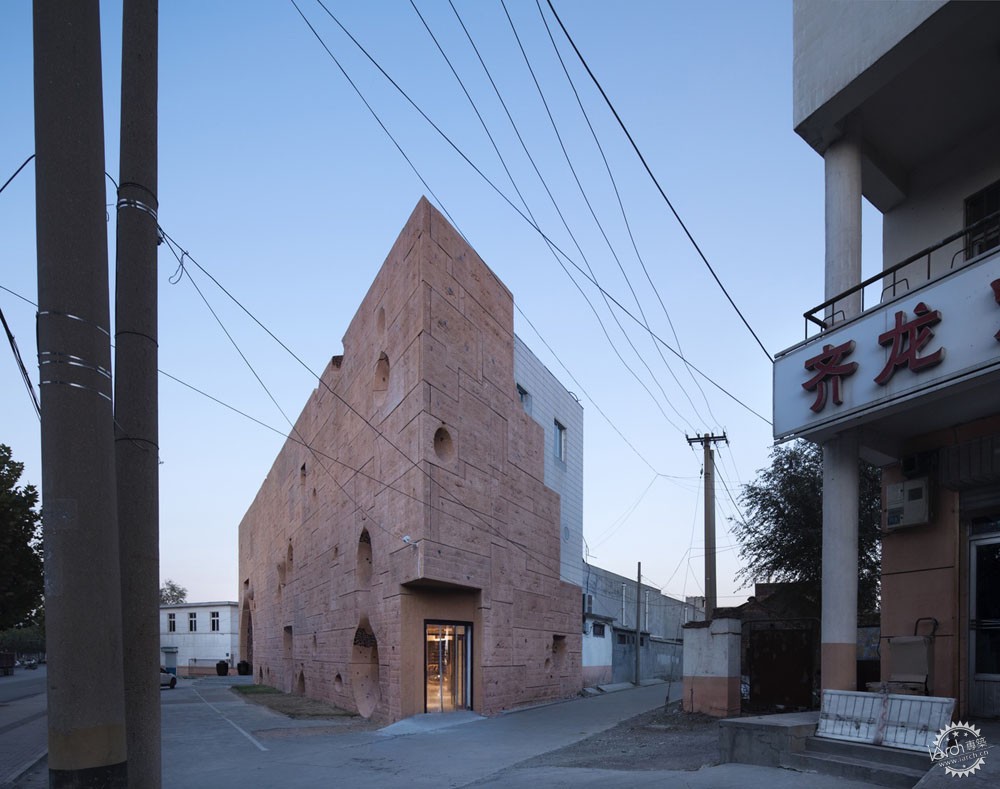
山东淄博王村小米醋博物馆|Millet Vinegar Museum / Zhang Hua. Image Courtesy of Zhang Hua
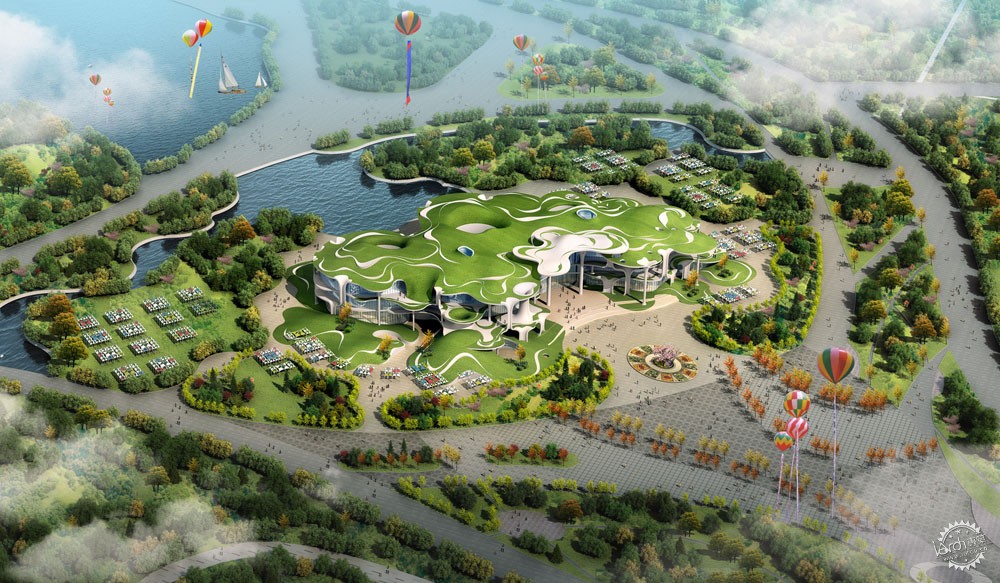
Courtesy of Zhang Hua. Image
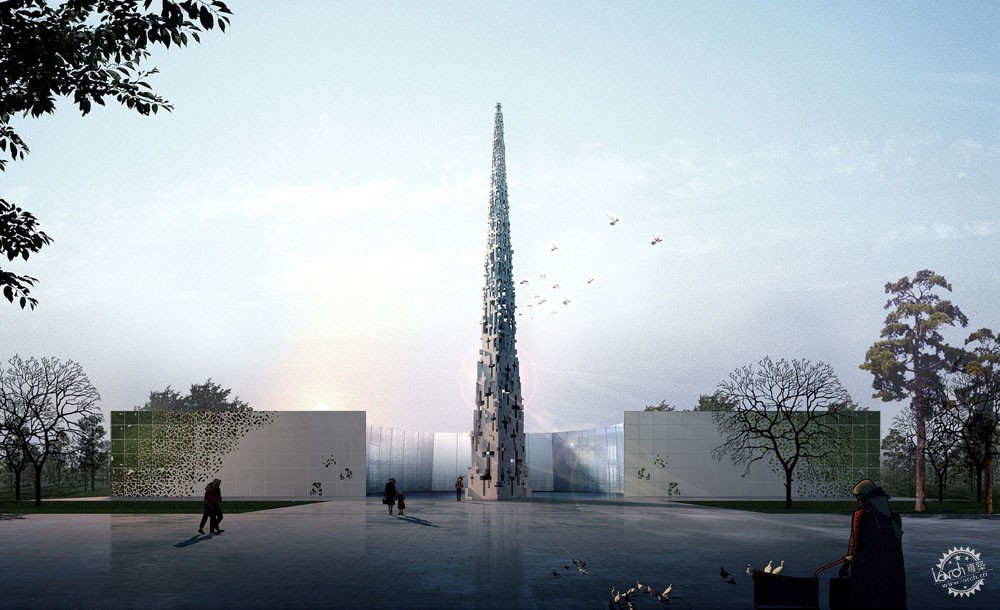
Seepage Church / Zhang Hua. Image Courtesy of Zhang Hua
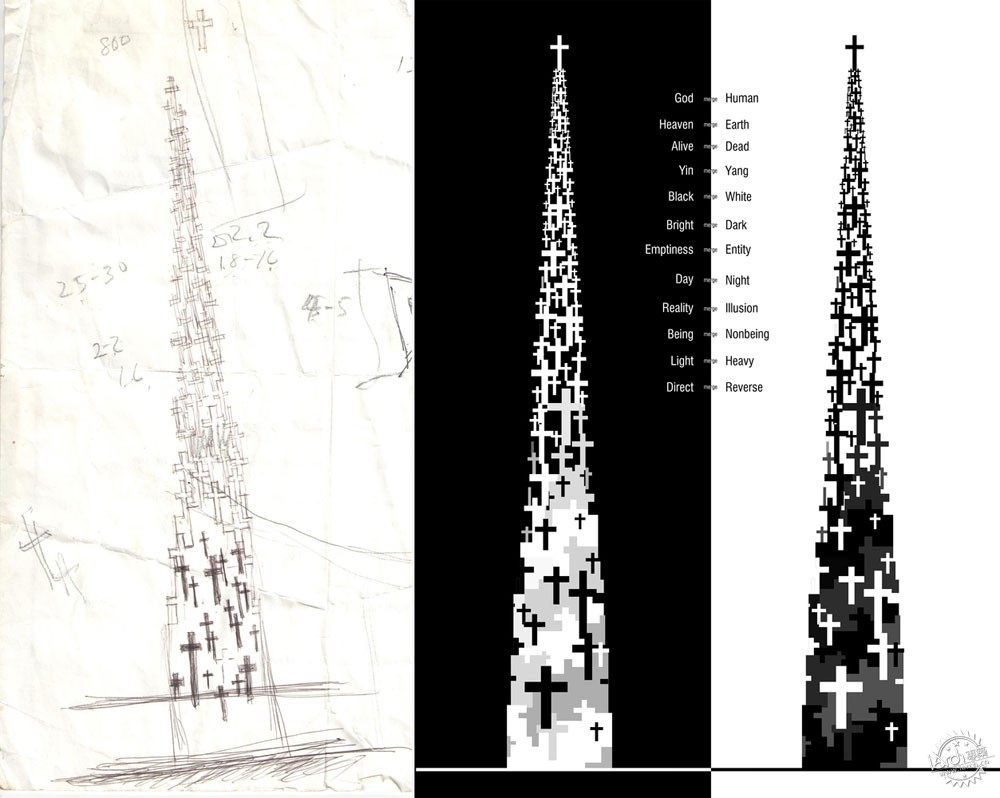
Seepage Church / Zhang Hua. Image Courtesy of Zhang Hua
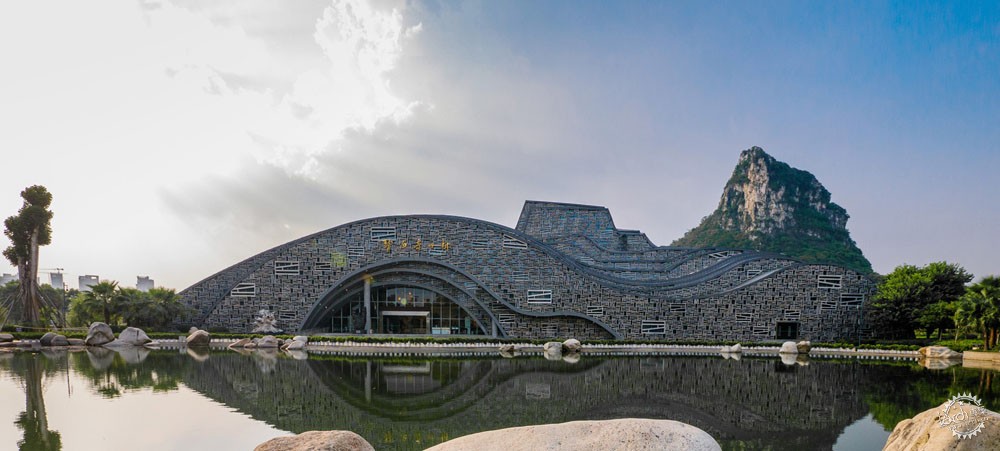
天津地质博物馆|Geological Museum Tianjin, China / Zhang Hua. Image Courtesy of Architectural Design and Research Institute of Tianjin University
作者简介:
VLADIMIR BELOGOLOVSKY是纽约非营利Curatorial项目的创始者,他在纽约库伯联盟学院学习建筑,并且著有9本著作,其中包括、《纽约:建筑指南》(2019年)、《名人时代的建筑师对话》(DOM, 2015)、《Harry Seidler: LIFEWORK 》(Rizzoli, 2014)、《苏维埃现代主义:1955-1985》(TATLIN, 2010)。另外还有许多大型展览,即2012年的世界巡回展览“Harry Seidle:绘画建筑”,2017至2018年的“Emilio Ambasz”、2016年起的“Sergei Tchoban”,还有2008年威尼斯建筑双年展俄罗斯展馆的“象棋游戏”。 Belogolovsky还是柏林建筑杂志“SPEECH”的美国记者,在2018年,他是北京清华大学的受邀学者,并且曾经在超过30个国家的高校和博物馆进行演讲。
Belogolovsky的专栏“理念城市”为ArchDaily的读者介绍了他与世界知名建筑师的对话,自2002年起,他采访过超过300位建筑师,而这些密切会谈也成为了场地的特定装置,这些装置由对话记录和一些言论构成。
VLADIMIR BELOGOLOVSKY is the founder of the New York-based non-profit Curatorial Project. Trained as an architect at Cooper Union in New York, he has written nine books, including New York: Architectural Guide (DOM, 2019), Conversations with Architects in the Age of Celebrity (DOM, 2015), Harry Seidler: LIFEWORK (Rizzoli, 2014), and Soviet Modernism: 1955-1985 (TATLIN, 2010). Among his numerous exhibitions: world tours of the work of Harry Seidler (since 2012), Emilio Ambasz (2017-18), Sergei Tchoban (since 2016), Colombia: Transformed (American Tour, 2013-15), and Chess Game for Russian Pavilion at the 11th Venice Architecture Biennale (2008). Belogolovsky is the American correspondent for Berlin-based architectural journal SPEECH. In 2018, he was a visiting scholar at Tsinghua University in Beijing. He has lectured at universities and museums in more than 30 countries.
Belogolovsky’s column, City of Ideas, introduces ArchDaily’s readers to his latest conversations with the most innovative international architects. Since 2002, he interviewed over 300 architects. These intimate conversations are featured in the curator’s ongoing site-specific installations made up of voice recordings and thought-provoking quotes.
|
|
